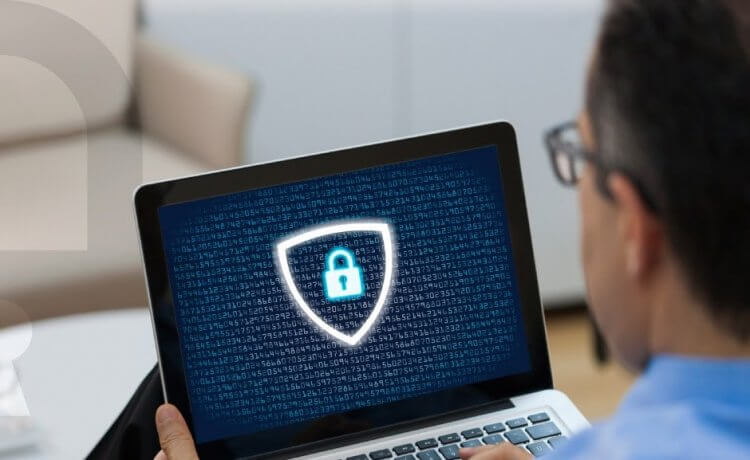Data is now any businesses’ most important asset, and at the same time is now the most lucrative target for thieves and cybercriminals.
With so many businesses adopting online-based operations, it is very important not only for big businesses and enterprises to stay on top of the latest security measures and best practices but also for small businesses and individuals. –
Hence, data security is now a very important buzzword for many businesses, and it is vital to the overall well-being of any business. Yet, what actually is data security? Is it the same as cybersecurity? How can we effectively implement it?
In this guide, we will answer those questions and discuss all you need to know about data security and some important data security tips to keep your information safe.
Let us begin.
What Actually Is Data Security?
Data Security can refer to both the discipline/practice and the technology implemented to secure data. So, we can properly define that data security is any effort made by an organization/individual to protect its data. While data security primarily concerns malicious breaches of data, data security also covers protection from accidental but unauthorized modification, disclosure, or even destruction/deletion of data.
Also, while nowadays data security mainly concerns the digital realm, it is important to remember that data can be physically stolen, so physical security is also required.
Typically data security covers four main aspects:
- Encryption: encrypting the data into a hash/code that can’t be deciphered unless the user possesses a decryption key
- Erasure: ensuring complete removal of data that is no longer usable so it can’t be accessed by unauthorized parties.
- Masking: masking certain data so those without proper authorizations can’t access it.
- Backup: creating backups of data so it can be recovered when the data is compromised and/or lost.
While there are other techniques and methods that can be implemented, data security should at the very least cover these four elements.
So, what about cybersecurity? Is it the same as data security? Let us take a look below.
Cybersecurity VS Data Security
The terms cybersecurity and data security, as we know, are often used interchangeably, creating the confusion that they are one and the same.
After all, cybersecurity also deals with protecting data and information, so there are some things that will indeed overlap between the two digital security disciplines.
With that being said, we can think that data security is a subset of cybersecurity. Cybersecurity deals with the prevention of any cyber-attacks on a system or network. While many types of attack vectors have the objective of stealing data, there are attack vectors that don’t (directly) target data. For example, preventing a DDoS (Distributed Denial of Service) is part of cybersecurity, albeit DDoS doesn’t directly target data/information.
So, cybersecurity is a more sweeping term that also includes data protection within it, while data security is more specific, only focusing on moving, storing, authenticating data, and protecting the data’s integrity.
Why Data Security Is Important?
Data security, as discussed, is about keeping your data safe. The actual execution of data breaches can be extremely fast, and 93% of successful data breaches occur in less than one minute. On the other hand, the impact can be so severe it will take weeks or even longer for the victim to recover.
Here are some crucial impacts of data breaches, which can be a major consideration of why data security is very important for your business:
- Financial impact
This one is fairly obvious: a data breach can result in significant revenue loss. In 2020, the overall average cost of a data breach is a whopping $4.27 million. A non-functional eCommerce website due to a data breach, for example, may cause your shoppers to go elsewhere.
- Loss of intellectual property
Cybercriminals may target valuable intellectual property like confidential documents containing your competitive strategies, blueprints, product designs, and so on. Businesses within the design, construction, and manufacturing industries are more prone to this threat. Even more, this threat isn’t only exclusive to big enterprises and companies, but more and more cybercriminals are targeting small companies and individuals in recent years.
- Long-term damage to your reputation
Data breaches won’t only affect your revenue, but can potentially impact your brand’s reputation on a long-term or even permanent basis. For example, when your customers’ sensitive data is leaked due to a data breach on your website, then they will perceive your business as not secure. Prospects will be hesitant to trust a business with a history of data breaches.
How Data Breaches and Losses Occur
Cybercriminals can use various methods and techniques to steal your sensitive information. However, loss of data is not only caused by external attacks but can also be caused by internal factors like when an employee accidentally or intentionally deletes valuable information.
With that being said, here are the most common ways data breaches occur in 2020:
- Physical losses
When discussing data losses and data breaches, commonly we think that the cause lies in the digital realm. However, around 4% of the recorded data breaches in 2020 are caused by physical incidents.
The most common cause in this category is stolen/lost devices and documents like computers, smartphones, and even paperwork. Another important cause is card skimming where attackers physically install a skimming device into ATMs and debit/credit card readers to skim the card’s information.
- Internal unauthorized use
According to Verizon’s 2020 report, around 8% of the total data breaches in 2020 are caused by employees making unauthorized use of data.
There are two major ways this can happen. First, employees may misuse data of which they actually have legitimate authorization. It can be unintentional in nature, but it can also be malicious.
The second way is when the employee actually ignored the authorization policies, for example accessing another employee’s email or confidential documents.
- Malware infection
Cybercriminals can use specific types of malware to collect sensitive data, for example, RAM scrapers that can scan your RAM to collect sensitive data. Keylogger malware is also pretty commonly used to steal passwords and other valuable data.
- Social engineering
According to the same Verizon report, 22% of all data breaches are caused by social engineering attacks, especially phishing. For example, attackers may impersonate the victim’s boss or HR manager (with a seemingly legitimate email) and ask for sensitive information.
- Human error
As briefly discussed, data breaches aren’t always caused by malicious attacks, but more than 20% of incidents were the result of mistakes made by employees. For example, accidentally forwarding an email containing sensitive information.
- External attacks
Cyber-attacks remain the leading cause of data breaches, especially account takeover (ATO) attacks like brute force or credential stuffing attacks. Once the hacker has possessed a user account, they can not only extract the information within the account but can also use the account to launch more malicious attacks to target other people (i.e. phishing).
Essential Tips to Keep Your Information Safe
Now that we’ve understood the importance of data security and the common threats to data, here are some important tips to keep your information safe:
- Use Strong and Unique Password
As discussed, human error is one of the leading causes of data breaches, and one of the most common mistakes made by so many people is not using long and complex enough passwords. Also, many people make the mistake of using only one password for all of their accounts, making them vulnerable to credential stuffing attacks.
As a general rule of thumb, your password should be 10 characters long or more and use a combination of uppercase, lowercase, numbers, and symbols. Also, always use unique passwords for each of your accounts.
Nowadays, there are various password manager tools you can use, like Google’s free password manager to easily generate and remember complex passwords for all your accounts. Use them to your advantage.
- Use Multi-Factor Authentication
Multi-factor authentication (MFA) or also called two-factor authentication (2FA) is important to add another layer of security in cases where your password/credential is compromised. MFA essentially asks for a second factor besides your password before you can access the account, and this second factor can be:
- Something you are: your face ID, retinal/iris scan, fingerprint, etc.
- Something you know: additional PIN, second password, etc.
- Something you have: USB key/dongle, a device to pair with, etc.
2FA is very effective protection in keeping your information safe, especially in preventing credential stuffing attacks.
- Installing Reliable Bot Management Solution
Many cyber attack vectors intended to steal data are made possible with the help of malicious bots. So, detecting and blocking these bots are essential aspects of data security to keep your information safe.
However, we can no longer rely on traditional bot detection solutions due to two main challenges:
- Aside from the bad bots operated by hackers and cybercriminals, there are good bots that can be beneficial for your network. We wouldn’t want to block, for example, Googlebot which will effectively prevent our site from being indexed and ranked by Google.
- Malicious bots are getting better at impersonating humanlike behaviors like visiting other pages before executing their objectives, performing nonlinear mouse movements, and so on while also using various technologies to mask their identity. Differentiating bots from legitimate human users has never been more difficult.
A sufficient bot management solution is needed to tackle these issues and we’d recommend an AI-powered bot management solution like DataDome that can use behavioral analysis to properly differentiate between good bots and malicious bots.
- Protect Yourself from Malware
Since, as discussed, malware infection is one of the leading causes of data breaches, it’s very important to protect your devices and system from malware infection.
Installing a reliable antivirus/anti-malware solution is a must, as well as using a proper firewall. Make a habit of performing a virus/malware scan regularly, at least once a week.
Also, make sure to update your software and OS, ideally as soon as these updates are available. Cybercriminals often target vulnerabilities in outdated OS and software to inject malware, which can result in compromising your whole system and sensitive data.
- Educate Yourself and Your Team to Recognize Phishing Scams
Sophisticated attackers can be really savvy in their phishing and/or social engineering attacks, so it’s essential to educate yourself and your employees on common signs to spot these attacks, including but not limited to:
- Check the displayed name in the email. Remember that the displayed name in the emails ‘from’ box does not guarantee that this is the legitimate sender. Look for minor differences, like “Andy” and “Andi”, for example.
- Check for grammar/spelling mistakes. Not always, but poor grammar can be a sign of phishing attacks.
- Suspicious links. Never click on any suspicious links. Hover your mouse over the link and check whether the web address is legitimate. Be very careful if the link asks for a login, as this is the main way the hacker steals login credentials.
- Don’t pass sensitive information. If the email asked you to reply with sensitive information, call a legitimate and known number to verify whether this request is legitimate.
- Domain name. In many phishing attacks, the attacker uses domain names that look similar to the legitimate domain name with minor differences, like ‘Yahoo’ with ‘Yah00’. Pay extra attention to these small differences.
- Attachment. In general, never download any attachment from a suspicious email, especially if the attached file’s format is suspicious (like .exe for a word file).
Conclusion
Data security is very important in ensuring the security and integrity of your sensitive information. The threats to our data security are rapidly evolving, so it’s also important to keep ourselves up to date with the latest data security best practices. If we don’t take precautions, we may be risking not only our sensitive data but also financial losses and other damages.
The tips we have shared above can be a solid foundation in building your comprehensive data protection strategy, and they are among the most important best practices in preventing data breaches to keep your information safe.




